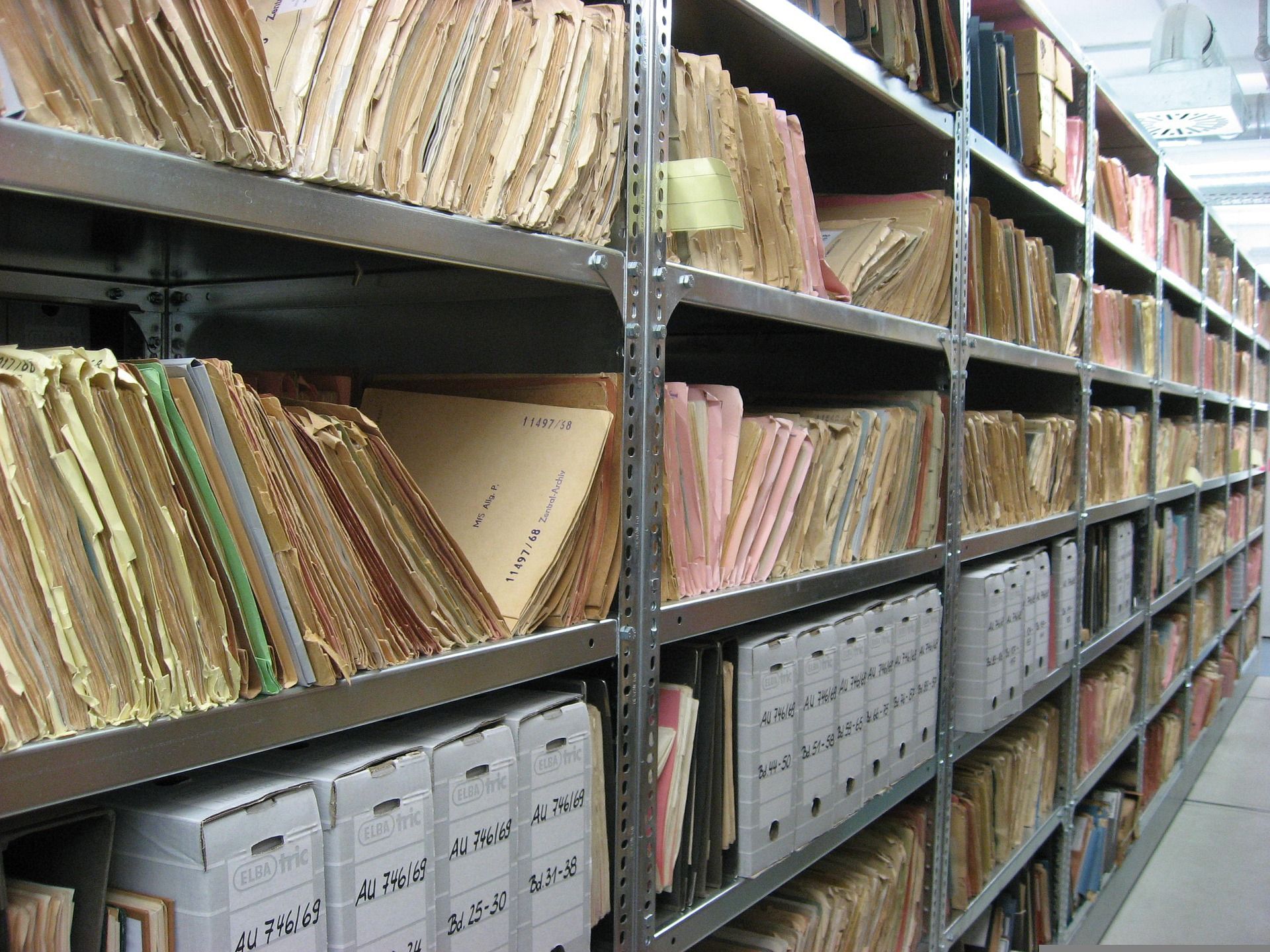Top Tips on How to Archive Physical Documents
As a document storage company, Ardington Archives have built up over 30 years of experience managing our client’s archive and storage requirements. We work closely with our clients to ensure best working practices and therefore provide guidance on storing documents prior to depositing them at our facilities. Below are the 10 top tips for storing documents on-site:
- Store documents in a stable environment. Paper will deteriorate if kept in places which are too humid, too hot, and too light and which allow uncontrolled access to pests (e.g. insects) and pollutants. In practice, typically bad places in which documents are often stored include basements (too humid and the danger of pests) or lofts (too hot in summer, too light and the danger of pests).
- Ensure documents are stored securely against theft. Three key elements are involved in protecting your documents against theft:
- The physical security of the building: use good quality locks and metal doors, put bars on any windows, maintain an up-to-date alarm system, and regularly check the building for any weaknesses or possible points of unauthorised entry.
- Controlling who is allowed into the document store: specify who is authorised to enter it and on what basis, monitor compliance with this, and do not allow visitors to have unsupervised access to the store.
- Maintaining confidentiality regarding the location, identity and content of the document store – or, to put it simply, do not draw attention to the fact that particular documents are kept in a particular place.
- Keep documents away from the risk of fire. Storing documents in any place which is (a) liable to become very hot at certain times, or (b) exposed to direct sunlight, carries with it a risk of fire. Lofts with large plastic skylights are particularly dangerous in this regard.
- Do not allow food to be consumed or stored in the same space as your documents. Food and documents don’t mix. The presence of even tiny traces of food will attract, sustain and promote the proliferation of pests such as insects and rodents which are more than capable of doing serious damage to your records.
- Catalogue the contents of each archive box. Cataloguing the contents of each box in which you are storing documents is undeniably a tedious task. However, having in your possession a proper index to the contents of your boxes allows you to find particular documents quickly and will save you from the tedious task of opening up box after box to find that one file or document you just know is ‘in there somewhere.
- Create a searchable storage space. If you simply stack 100 boxes in a room without troubling to sort them into different locations or categories, you are likely to experience trouble finding individual boxes in the future. The best approach is to label boxes individually and catalogue the contents on a searchable index.
- Label boxes properly. Even if you have properly catalogued each box, it is still important to ensure that each has on it a clear, prominent and sufficiently descriptive label, which identifies the box within your catalogue.
- Allow sufficient access space in the document store. Space is always at a premium in any company, so it is always tempting to cram as much in as possible. However, while all “dead space” should be filled, it is important to remember to leave enough space in the right places so that the boxes can be accessed without unnecessary loss of time and without compromising applicable regulations (particularly those pertaining to health and safety and fire safety).
- Use strong boxes. Flimsy boxes tend to be cheap, which is certainly a point in their favour, however, they also have a tendency to collapse, tear or burst either when being moved or over a long period of storage. The consequences of this can include loss or damage to documents. More typically, they sag and collapse when stored in stacks over a long period, with the result that the contents have to be reboxed in sturdier boxes – a labour and materials expense that could have been avoided.
- Do not overfill boxes. When filling up an archive box with documents and files, it is always tempting to try to jam as much in as possible and then shove the lid on. The result is usually an unsightly bulge at the top. This can be ignored of course – up to the point when you try to stack the boxes. You then find that the stacks are horribly unstable because the surfaces of the boxes on which each box stands are not flat. It is also important not to underfill boxes – unless they are of particularly strong build – since the unfilled (and therefore unsupported) top section of each box may collapse under the weight of the boxes stacked above it.




